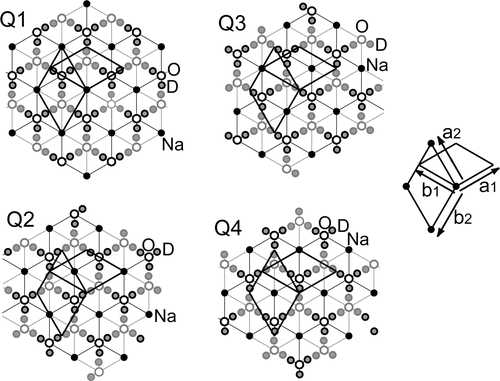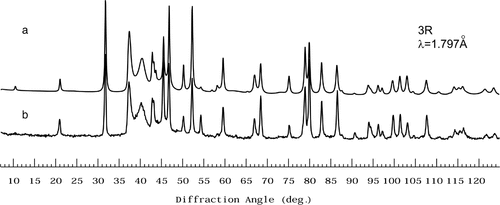Figures & data
Figure 1. Possible configurations of fundamental structure model of the guest sheet, based on a cell a2 = b2 = 3.26 Å, c = 9.8 Å. The cell is based on the axes a2 = (2/3)a1 + (4/3)b1, b2 = −(4/3)a1–(2/3)b1 and c = c2H/2 = c3R/3, whereas the basic axes a1 and b1 are used for the CoO2 host layer. Assumed local symmetry operations in a layer unit are threefold rotation axis and inversion centre. Layer unit is illustrated using circles with dark rims for a half part (0.0 ≤ z < 0.5) and with light rims for the other half part (−0.5 ≤ z < 0.0). Occupancies of Na, O and D are estimated as 0.47, 0.89 and 0.61, respectively. Four configurations, Q1, Q2, Q3 and Q4, with respective shift vectors 0, (1/2)a2, (1/2)b2 and (1/2)a2 + (1/2)b2, are considered.

Table 1. Probability table (P) for an interlayer short-range order model.
Figure 2. (a) The powder neutron diffraction pattern simulated using the layer units shown in and the probability table shown in and (b) the observed pattern of 3R and 2H phases.

![Figure 3. A probable model of intralayer ordering in the guest part. Bounded projections along [00] (left) and along [110] (right). Occupancies of Na sites are assumed to be 1.0 (small solid circle) and 0.2 (hatched circle), and those of O and D are estimated as 0.89 and 0.96.](/cms/asset/d4093ba6-5ef4-4c97-9e30-1a9ff1e3a29d/tphm_a_207738_f0003.gif)
